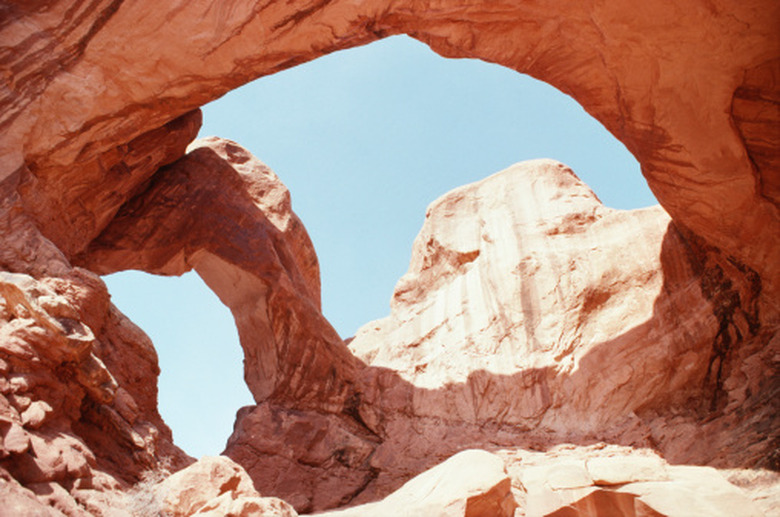Erosion Experiments For Elementary Kids
Erosion is one of the slowest, yet most powerful forces in nature. The immensity of the Grand Canyon is an extreme example of the effects erosion can have on its surroundings. Over millions of years, the Colorado River wore away inch after inch of the Arizona desert, producing one of the natural wonders of the world. Help elementary school students appreciate the dramatic effects that water can have on the earth through a variety of easy, yet fun classroom experiments.
Wind Erosion
Wind Erosion
To demonstrate wind erosion, the Oracle ThinkQuest website recommends filling a box with sand and blowing across the top. This experiment quickly shows the devastating effects of the wind on an unprotected substance. As you blow, the sand will swiftly move away from your breath, just as it would during a sandstorm.
Water Erosion (Simple)
Water Erosion (Simple)
If you put sand in the same box as before and then pour water on it from a bottle, you will notice the water moving the sand aside to form trenches. In nature, rain can permanently change the shape of areas that are unprotected by grass or rock. As a variation, punch holes in the bottom of your collection tray and let the water drain through the holes as you pour.
Water Erosion With Ground Covering
Water Erosion With Ground Covering
Clint Akarmann's entry in the 2006 California State Science Fair tested the effectiveness of a variety of ground covers in protecting against water erosion. The coverings included grass, a mixture of grass and sticks, furrows against the slope, wood chips, water barriers, pine needles, rocks at the bottom, rocks spread evenly around the slope, and plain soil. He filled nine containers with soil, covered each container with one of the coverings, and then drilled holes in one end of each container. All of the containers rested on a 15-degree hill and were weighed at the same time day. The same volume of water was added twice a day. The container with just soil lost the most weight to erosion. The trays with coverings of grass, grass and sticks, wood chips, pine needles, and even rocks lost no soil to erosion during the nine-day test.
Beach Formation
Beach Formation
Another experiment is to place sand in a slope at one side of a pan, and then add enough water to cover about half of it. Using a ruler, create waves that move steadily against the sand. Over time, you will see sand move from the dry part and end up under water. This will demonstrates how sandbars gradually appear.
Cite This Article
MLA
Contributor, . "Erosion Experiments For Elementary Kids" sciencing.com, https://www.sciencing.com/erosion-experiments-elementary-kids-8485933/. 24 April 2017.
APA
Contributor, . (2017, April 24). Erosion Experiments For Elementary Kids. sciencing.com. Retrieved from https://www.sciencing.com/erosion-experiments-elementary-kids-8485933/
Chicago
Contributor, . Erosion Experiments For Elementary Kids last modified March 24, 2022. https://www.sciencing.com/erosion-experiments-elementary-kids-8485933/
